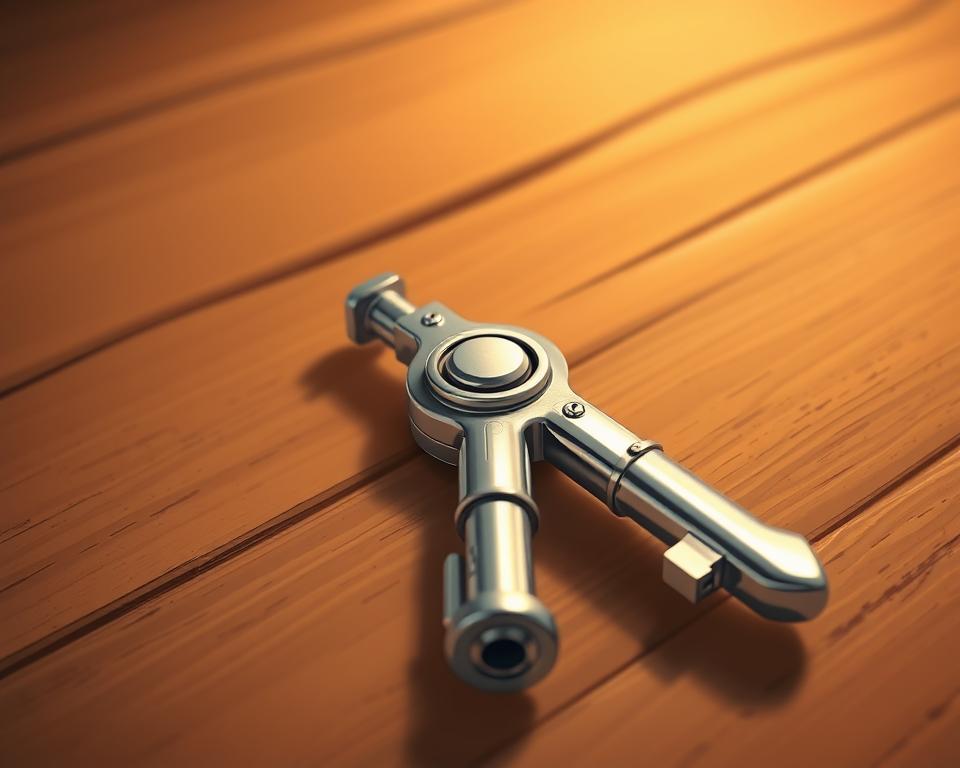Red Light Therapy New Jersey – Reliable & Proven Therapy
Picture restoring your body within through mere light. Red light therapy in New Jersey is changing how we view wellness and recovery. It employs targeted light spectrums to infiltrate cellular structures, triggering innate recovery responses on a microscopic scale.
At the team at Rednewal Salons, the top Sports recovery with LED therapy New Jersey blend science with comfort. Their Theralight 360+ system immerses you in curative rays, penetrating every tissue, regardless of skin tone or body type. This system reduces session length to a quarter of what other devices need.
New Jersey LED therapy is secure and proven. It produces soothing heat that unwinds you while boosting cell restoration. This natural healing method requires no drugs, surgical interventions, or convalescence. Each session leaves you feeling refreshed and energized, with your body maintaining repair processes for hours afterward.
Critical Findings
- Red light therapy uses specific wavelengths to penetrate cells and trigger natural healing
- In New Jersey, Rednewal Salons showcases their unique Theralight 360+ platform
- Therapy duration is only 25% of what conventional machines require
- Delivers results no matter your complexion or physique
- Treatments produce gentle heat that soothes and calms
- Requires zero medications, incisions, or rest periods
- Full-body treatment ensures maximum tissue saturation from every angle
How Red Light Therapy Operates and Its Mechanisms
Specific light spectra in red light therapy induce cellular repair processes. Called photobiomodulation within New Jersey healthcare facilities, it targets damaged or stressed cells to promote natural recovery. Upon absorbing these targeted wavelengths, they initiate self-repair processes.

At its core, red light therapy enhances cellular ATP synthesis. The beams infiltrate skin layers to energize the mitochondria. They free bound nitric oxide in cells, restoring oxygen circulation. Ultimately, cells regain optimal ATP output.
During cellular repair, red light therapy in New Jersey clinics delivers targeted wavelengths between 660 and 850 nanometers. These exact spectrums:
- Reduce inflammation in damaged tissues
- Increase blood flow to treated areas
- Stimulate collagen production for skin health
- Accelerate wound healing processes
- Mitigate cellular oxidation
Professional red light therapy devices emit controlled doses of therapeutic light without harmful UV rays. The non-invasive design allows consistent applications. Red light therapy for skin rejuvenation works by encouraging natural cellular processes, not forcing artificial changes.
The treatment helps cells return to their optimal state by addressing the root causes of cellular dysfunction. Via enhanced mitochondrial efficiency and stress reduction, tissues can heal naturally and maintain better health over time.
New Jersey Red Light Treatment
Finding premium red light therapy in New Jersey is now simpler with Rednewal Salons. They house New Jersey’s exclusive Theralight 360+ unit. They lead statewide red light therapy venues. It provides clients with an unmatched wellness experience.
It’s the peak red light device available statewide. It emits light omni-directionally for total coverage. Unlike ordinary units, it achieves deep, uniform penetration. Clients searching for “red light therapy near me” will find Rednewal unique among wellness centers
.
What sets this 360° red light treatment in New Jersey apart? It’s due to the system’s cutting-edge engineering:
- 360-degree light coverage for complete body treatment
- Patent-pending cooling system that prevents overheating
- Consistent LED temperature for optimal performance
- Comfortable sessions without excessive heat buildup
The soothing atmosphere at Rednewal creates the perfect environment for relaxation and healing. Sessions optimize beam output without compromising relaxation. Hence, it stands as the top choice for expert red light treatment
.
Perks of Professional-Strength Red Light Sessions
Professional grade red light therapy offers significant health benefits to patients in New Jersey. It applies targeted light spectrums for deep tissue exposure. This triggers natural healing processes throughout the body.
Expert red light benefits reach past fundamental well-being. Users report a brief “light high” mid-treatment. They also experience a significant boost in energy levels. Several patients enjoy superior sleep and mood after only a handful of visits.
It stands as a medication-free solution for managing discomfort in New Jersey. It addresses discomfort at its source.
| Physical Benefits | Mental & Emotional Benefits | Athletic Performance |
|---|---|---|
| More even skin color | Enhanced cognition | Accelerated muscle healing for Garden State sportspeople |
| Lower fluid buildup in arms and legs | Greater psychological equilibrium | Improved sports recovery New Jersey teams rely on |
| Improved digestive regularity | Heightened wellness sensation | Lower post-exercise swelling |
| Youthful cell regeneration | Sharper cognitive focus | Faster comeback to top form |
Red light therapy’s effects vary based on individual health conditions and wellness goals. Some notice immediate energy and mood boosts, while others see gradual changes over several sessions. Steady therapy yields the best rejuvenation results. It kickstarts your own recovery processes
Rednewal’s Cutting-Edge Theralight 360+ System
The Theralight 360+ at Rednewal is New Jersey’s top-tier red light device. This system provides therapeutic light from all angles, ensuring full body coverage during each session.
It embodies state-of-the-art photobiomodulation technology in the Garden State. It achieves full-depth penetration in only a quarter of the usual session length. So, it offers efficient treatments that match your timetable
.
Its exclusive cooling tech maintains ideal diode warmth throughout sessions. It focuses on neutralizing excessive free radicals within tissues. It interrupts oxidative damage cycles and clears harmful molecules
.
| Feature | Benefit |
|---|---|
| All-around light delivery | Covers head-to-toe in one go |
| Innovative heat-control | Comfortable temperature during sessions |
| Quadruple speed sessions | Finishes in just 15–20 minutes |
| Bioenergetic enhancement | Restores oxygen levels for ATP production |
It replenishes oxygen reserves in mitochondria to boost ATP creation. This advanced method positions it as a top choice for professional grade red light therapy in New Jersey
.
Therapy Workflow & Client Experience
Each appointment opens with a straightforward arrangement in your own suite. The treatment bathes you in cozy radiance. This secure, non-surgical LED system directs light to areas of concern as you relax
.
Initial phase: three sessions per week for two weeks. Then, sessions decrease to twice a week until you reach your wellness goals. Ongoing weekly touch-ups preserve benefits. This structured plan ensures you get the most benefits while fitting into your schedule
.
Sessions deliver gentle heat to foster profound tranquility. Heat-control tech ensures no hot spots, keeping you at ease. Many patrons drift off because they’re so comfortable, adding to the spa’s sleep-promoting benefits
.
You need only basic eye shields. Contact lens wearers get snug-fitting goggles that go over specs. The whole process is painless with no downtime needed afterward
.
When looking for the best red light therapy near you in New Jersey, consider the cost. Individual treatments cost between $50 and $150, while package deals offer better value for regular treatments. Many facilities offer consultations to discuss pricing options that fit your wellness goals and budget
.
Health Concerns Managed with Infrared Light
Infrared light therapy in New Jersey offers relief for various health conditions by targeting cellular dysfunction at its source. It reverses ROS buildup that causes inflammation and injury
.
NJ residents choose IR therapy for chronic pain because it avoids surgery. Users report major relief absent drugs or operations. The therapy penetrates deep into tissues, promoting natural healing processes
.
| Condition | Treatment Benefits | Typical Results Timeline |
|---|---|---|
| Arthritis | Less stiffness and swelling | 2-4 weeks |
| Exercise-related injuries | Speedier healing of damage | One to three weeks |
| Persistent lumbar pain | Decreased muscle tension and pain | 3-6 weeks |
| Tendinopathy | Boosted vascularization and recovery | 2-4 weeks |
Red light therapy for injury recovery in New Jersey accelerates healing by increasing blood circulation and reducing inflammation. Athletes and active individuals find this treatment beneficial for faster recovery
.
NJ IR arthritis treatment soothes joints safely. It energizes cells to rebuild joint tissues
.
Pain relief via red light normalizes cell function and curbs ROS body-wide
.
Reasons to Select Rednewal for Red Light Therapy
Rednewal is the only place in New Jersey with the Theralight 360+ experience. It surrounds you with healing rays from every side. At Rednewal, the atmosphere is designed to help clients feel truly “Rednewed” through advanced wellness solutions with red light therapy new jersey
.
Their advanced approach yields quicker benefits than standard treatments. It integrates smart cooling for a pleasant experience. This approach makes immune boosting therapy new jersey more accessible and enjoyable for everyone
.
| Treatment Benefits | Traditional Methods | Rednewal’s Approach |
|---|---|---|
| Time per Visit | Forty-five to sixty minutes | Twenty to thirty minutes |
| Illumination Zone | Limited coverage | 360-degree full body |
| Comfort Level | Standard comfort | Advanced cooling system |
| Photon Emission | Single direction | Omni-directional |
Their advantages extend past routine therapy. Visitors get robust stress management and skin revitalization in New Jersey. Their dedication to quality shows throughout the client journey. Starting at the first assessment through continuous guidance, their experts lead you to peak outcomes
.
Kick Off Your Red Light Treatment
Your first steps at Rednewal are easy but detailed. It centers on cellular repair new jersey goals. Your first step is a detailed assessment. Which creates a bespoke regimen matching your wellness targets
.
For the best results, consistency is key. Commonly, newcomers opt for three visits per week. Helping you acclimate to the increased cellular production new jersey sessions. Sessions last roughly 20 minutes as the Theralight 360+ beams therapeutic rays
.
| Week | Session Frequency | Expected Benefits |
|---|---|---|
| Weeks 1–2 | Three sessions per week | Early energy boost and inflammation relief |
| Week 3 to 4 | Three sessions per week | Enhanced energy, better sleep quality |
| Weeks 5–8 | 2–3× a week | Better perfusion and range of motion |
| Week 9 and beyond | One to two sessions per week | Long-term care and results retention |
Steady appointments support improve joint motion new jersey objectives. They continue to activate self-repair. Several clients notice deeper rest within weeks. Late-day therapy supports better nocturnal rest
.
To Summarize
Red light therapy at Rednewal Salons is a game-changer for natural healing in New Jersey. It offers a safe route to wellness, avoiding invasive procedures and medications. Their 360+ bed emits exact spectrums for microscopic restoration
NJ sportspeople turn to it for peak performance and repair. It speeds up tissue healing and shortens downtime after training. Chronic sufferers benefit from localized cellular therapy. The professional-grade light treats joint issues and tissue harm
Rednewal is your go-to for nerve regeneration and sports recovery with LED therapy in New Jersey. Their evidence-driven methods bolster innate repair. Every visit pushes you toward top wellness and athletic form
Start your journey to better health today. Book a consultation at Rednewal Salons to see how red light therapy can change your wellness path. Your body has the power to heal—let advanced light technology unlock that power
FAQ
What makes Rednewal Salons the best red light therapy in New Jersey?
Rednewal leads NJ thanks to the patented Theralight 360+ setup. This technology offers therapeutic light from all angles, achieving maximum tissue saturation in a fraction of the time of traditional devices. Its advanced photobiomodulation and cooling system make it the most effective red light therapy solution in the state
How much does red light therapy cost at Rednewal?
Fees are determined by session bundles and personal protocols. Because it’s 4× quicker than standard beds, you get value per minute. Get in touch with Rednewal for detailed pricing information
Is red light therapy safe for all skin types?
Indeed, the system is skin-color agnostic and body-shape neutral. Non-surgical and gentle, with minimal eye gear for lens-wearers
Does red light therapy address chronic pain conditions?
Absolutely, it alleviates long-term aches by fixing cell-level issues. This helps with arthritis pain, injuries, and chronic pain conditions by restoring cellular homeostasis and enabling natural healing
How quickly will I see results from red light therapy sessions?
Outcomes depend on your personal health profile. Several patients experience mood lifts, energy spikes, and sleep gains in initial visits. Three sessions weekly over two weeks typically yields marked progress
What does a typical red light therapy session feel like?
At Rednewal, sessions feel like a warming sensation from red-light rays that promotes relaxation. The cooling system ensures comfort without excessive heat, creating a soothing full-body experience
Can red light therapy improve sports performance and recovery?
Indeed, sportspeople and gym-goers see gains. It speeds healing, elevates athletic output, and cuts muscle downtime through targeted photobiomodulation
Can red light therapy improve skin tone and reduce wrinkles?
It clears complexion, smooths fine lines, and revives youthful skin. It stimulates collagen production and improves circulation through vasodilation
How does infrared light therapy help with sleep and mood?
It naturally improves sleep patterns and mood by restoring cellular balance and reducing oxidative stress. It helps regulate circadian rhythms, reduces stress, and promotes beneficial hormone production for overall well-being and mental clarity
What conditions can be treated with the Theralight 360+ at Rednewal?
It works on persistent inflammation, joint disorders, neural healing, tissue damage, and stiffness. Additionally, it counters cellular oxidation and fortifies immunity and holistic wellness









